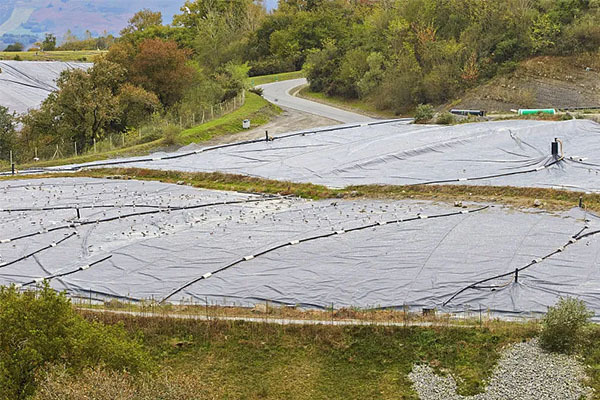Understanding Woven Geobags: An Essential Tool in Logistics Packaging
Release time:
2025-06-27
Woven geobags are versatile and durable packaging solutions widely used in various industries, particularly in logistics and transportation. These bags are made from woven polypropylene or similar materials, known for their strength and resistance to environmental factors. Their unique construction allows them to support a variety of applications, making them an essential tool in the packaging sec
Woven geobags are versatile and durable packaging solutions widely used in various industries, particularly in logistics and transportation. These bags are made from woven polypropylene or similar materials, known for their strength and resistance to environmental factors. Their unique construction allows them to support a variety of applications, making them an essential tool in the packaging sector.
One of the primary advantages of using woven geobags is their exceptional durability. Unlike traditional paper or non-woven bags, woven geobags can withstand harsh conditions, including moisture, UV exposure, and heavy loads. This durability ensures that the contents remain protected during transit and storage, reducing the risk of damage or loss. For businesses in logistics, this means fewer claims for damaged goods and enhanced customer satisfaction.
Moreover, woven geobags are environmentally friendly. Many manufacturers now produce these bags using recycled materials, making them a sustainable choice for companies that prioritize eco-friendly practices. Additionally, they are lightweight, which helps reduce transportation costs and the carbon footprint associated with shipping and logistics.
Woven geobags also offer a high degree of customization. Businesses can choose various sizes, colors, and printing options to align with their branding and marketing needs. This flexibility allows companies to create a cohesive look for their packaging while ensuring that their products are easily identifiable in the supply chain. Customization can also include adding features like labels or handles for convenience, further enhancing the user experience.
Another significant benefit of woven geobags is their cost-effectiveness. Compared to other packaging options, woven geobags typically offer a lower cost per unit, especially when purchased in bulk. This affordability makes them an attractive option for companies looking to optimize their packaging budget without compromising on quality.
In terms of applications, woven geobags are used across various sectors, including agriculture, construction, and waste management. In agriculture, they are often used for storing and transporting grains, seeds, and fertilizers. In construction, they can hold sand, soil, or gravel for use in landscaping and erosion control. Their versatility means that businesses can explore multiple avenues for usage, maximizing their investment in this type of packaging.
In conclusion, woven geobags represent a practical and efficient solution for businesses within the logistics packaging industry. Their durability, customization options, environmental benefits, and cost-effectiveness make them an ideal choice for companies looking to improve their packaging strategy. By incorporating woven geobags into their operations, businesses can enhance their logistical efficiency and sustainability efforts, ultimately leading to better service and satisfaction for their customers.
One of the primary advantages of using woven geobags is their exceptional durability. Unlike traditional paper or non-woven bags, woven geobags can withstand harsh conditions, including moisture, UV exposure, and heavy loads. This durability ensures that the contents remain protected during transit and storage, reducing the risk of damage or loss. For businesses in logistics, this means fewer claims for damaged goods and enhanced customer satisfaction.
Moreover, woven geobags are environmentally friendly. Many manufacturers now produce these bags using recycled materials, making them a sustainable choice for companies that prioritize eco-friendly practices. Additionally, they are lightweight, which helps reduce transportation costs and the carbon footprint associated with shipping and logistics.
Woven geobags also offer a high degree of customization. Businesses can choose various sizes, colors, and printing options to align with their branding and marketing needs. This flexibility allows companies to create a cohesive look for their packaging while ensuring that their products are easily identifiable in the supply chain. Customization can also include adding features like labels or handles for convenience, further enhancing the user experience.
Another significant benefit of woven geobags is their cost-effectiveness. Compared to other packaging options, woven geobags typically offer a lower cost per unit, especially when purchased in bulk. This affordability makes them an attractive option for companies looking to optimize their packaging budget without compromising on quality.
In terms of applications, woven geobags are used across various sectors, including agriculture, construction, and waste management. In agriculture, they are often used for storing and transporting grains, seeds, and fertilizers. In construction, they can hold sand, soil, or gravel for use in landscaping and erosion control. Their versatility means that businesses can explore multiple avenues for usage, maximizing their investment in this type of packaging.
In conclusion, woven geobags represent a practical and efficient solution for businesses within the logistics packaging industry. Their durability, customization options, environmental benefits, and cost-effectiveness make them an ideal choice for companies looking to improve their packaging strategy. By incorporating woven geobags into their operations, businesses can enhance their logistical efficiency and sustainability efforts, ultimately leading to better service and satisfaction for their customers.
Previous Page
Next Page






